#maid fashion
Text

our Komaeda really likes maid outfits and Hinata appreciates it. - Shane
#shane's art#hikoma#komahina#hajime hinata#hinata hajime#nagito komaeda#komaeda nagito#komaeda#hajime#hinata#danganronpa#nagito x hajime#komaeda x hinata#hajime x komaeda#hinata x komaeda#nagito#super danganronpa 2#danganronpa 2#danganronpa art#danganronpa fanart#maid#maids#maid outfit#maid fashion#maid uniform#maid costume
32 notes
·
View notes
Text

🍨🍴!!
#drawing#cute#dibujo#kawaii#pastel#pink#maid cafe#oc#oc art#my ocs#original character#digital art#jfashion#jirai kei#hime gyaru#kawaii food#kawaii fashion#kawaii art#cutecore#kawaii aesthetic#kawaiicore
1K notes
·
View notes
Text







【-Maid in the Forest-】 Lolita OP Dress, Apron and Matching Accessories Are Back In Stock!!!
◆ Shopping Link (very limited quantity) >>> https://lolitawardrobe.com/maid-in-the-forest-vintage-classic-lolita-op-dress-and-apron-set_p8153.html
#lolita fashion#lolitawardrobe#lolita dress#vintage lolita#classic lolita#maid lolita#maid dress#maid apron
490 notes
·
View notes
Text

194 notes
·
View notes
Text










444 notes
·
View notes
Text

猫耳メイドミクさん(つまみ食いver)
#illustration#fashion#blue#pink#イラスト オリジナル#original art#初音ミク vocaloid#初音ミクイラスト#初音ミク#hatsune miku#vocaloid miku#maid uniform#nekomimi#neko girl#猫耳#メイド服
159 notes
·
View notes
Text


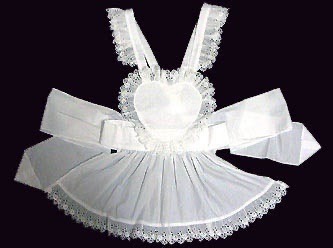
First of May - Family Restaurant Heart Apron (2002)
#first of may (brand)#sweet lolita#old school lolita#meido#meido fashion#egl community#egl#egl fashion#lolita fashion#maid cafe#kawaii fashion#jfashion#harajuku fashion#alt fashion#aprons#accessories#family restaurant heart apron#my post tag
401 notes
·
View notes
Text
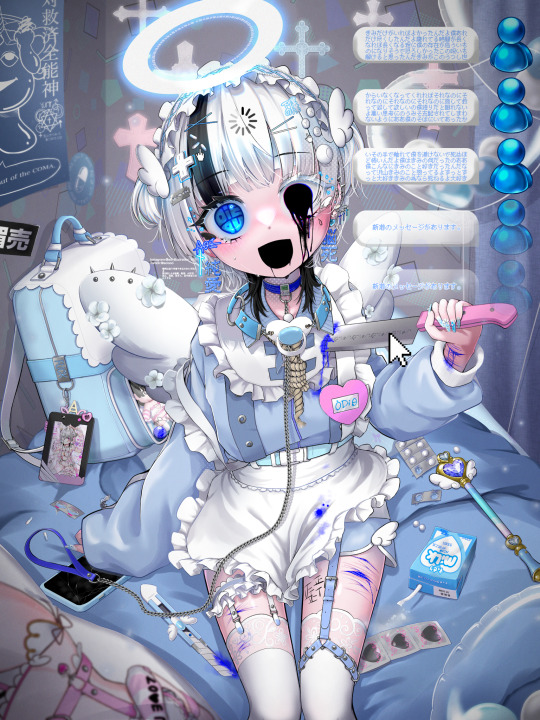
2024/03/28
"あいしていたのに"
第三者による転載・転用・加工・改変・再使用・AI学習・自作発言は全て禁じる
Reprinting, diversion, processing, modification, reuse, AI learning, and self-made remarks by third parties are prohibited.
#illustration#anime art#digital art#yamikawaii#weirdcore#天使界隈#男の娘#artists on tumblr#oc art#my art#yandere#jirai fashion#jfashion#ヤンデレ#やみかわいい#水色#mizuiro#jersey maid#ジャージメイド#webcore
278 notes
·
View notes
Text

リクエストから、ヴィル様
https://x.com/shi_jila
#twisted wonderland#disney twisted wonderland#twst fanart#illustration#digital illustration#illustrator#digital fanart#digitalart#artists on tumblr#fanart#ツイステ#ツイステッドワンダーランド#ツイステファンアート#イラスト#イラスト垢#イラスト作成#twst#harajuku fashion#twst art#decora#decora kei#vil schoenheit#ヴィル・シェーンハイト#twst vil#yamikawaii#jersey maid#menhera fashion#kawaii aesthetic#kawaii illustration#kawaii
120 notes
·
View notes
Text


♡ Cafe Maid Pins: My Melody // Kuromi by blushsprout ♡
#cute#kawaii#sanrio#sanriocore#sanrio fanmerch#my melody#kuromi#maid#maid cafe#cafe#enamel pin#pin#badge#accessories#fashion blog#hard enamel pin#shopping blog#blushsprout#under 20
209 notes
·
View notes
Note
Hello!
I am an aspiring author who struggles with accurately portraying historical clothing, and I stumbled across your blog while searching for photographs and information on late 19th century/USA Gilded Age fashion. From the research I've seen compiled across books/the internet, the clothing of the upper class from that area is very well documented in paintings, garment catalogues, photographs, museums, etc....but finding information on what the day-to-day wear of normal people was like is proving much more difficult. Since you seem to be knowledgeable in the subject of historical clothing in this approximate time period, I was wondering if you knew about any good resources to learn more about what people who couldn't afford to follow upper class trends were wearing in the general era as well as any general information around these items.
If it helps, I'm focused on eastern and southeastern United States farming/small railroad town/mountain mining/gulf coast wetland communities, but even just more general resources about what sort of clothing that the average poor person during the Gilded Age wore would be greatly helpful. I've been able to find a few photographs here and there, but these probably aren't an accurate depiction of a persons' 'day-to-day' wear, and I also haven't found much on how women learned to sew homemade clothes, what garments if any would have been bought, where people in rural areas would have sourced their cloth, what undergarments were like, how work shoes were made & aquired, ect.
Please feel free to ignore this if it isn't something you're interested in answering as I'm sure you get a lot of asks, but I'd greatly appreciate it if you have any pointers!
So here's the thing about 19th-century clothing:
in many ways, it's the same all the way down
now, that's a serious generalization. is a farm wife in Colorado going to be wearing the same thing as a Vanderbilt re: materials, fit, and up-to-the-minute trendiness? obviously not. but because so much of what people wore back then has only survived to the present day in our formalwear- long skirts, suits, etc. -we tend to have difficulty recognizing ordinary or "casual" clothing from that period. I also sometimes call this Ballgownification, from the tendency to label literally every pretty Victorian dress a Ball Gown (even on museum websites, at times). Even work clothing can consist of things you wouldn't expect to be work clothing- yes, they sometimes worked in skirts that are long by modern standards, or starched shirts and suspenders. Occupational "crap job clothes" existed, but sometimes we can't recognize even that because of modern conventions.
A wealthy lady wore a lot of two-piece dresses. Her maid wore a lot of two-piece dresses. The trailblazing lady doctor working at the hospital down the road from her house wore a lot of two-piece dresses. The factory worker who made the machine lace the maid used to trim her church dress wore a lot of two-piece dresses. The teenage daughter of the farm family that raised the cows that supplied the city where all those people lived wore a lot of- you get the idea. The FORMAT was very similar across most of American and British society; the variations tended to come in fabrics, trims, fit precision, and how frequently styles would be updated.
Having fewer outfits would be common the further down the social ladder you went, but people still tried to have as much underwear as possible- undergarments wicked up sweat and having clean ones every day was considered crucial for cleanliness. You also would see things changing more slowly- not at a snail's pace, but it might end up being a few years behind the sort of thing you'd see at Newport in the summer, so to speak. Underwear was easier to make oneself than precisely cut and fitted outer garments for adults (usually professionally made for all but the poorest of the poor for a long time- dressmakers and tailors catering to working-class clientele did exist), but that also began to be mass-produced sooner than outer clothing. So depending on the specific location, social status, and era, you might see that sort of thing and children's clothing homemade more often than anything else. Around the 1890s it became more common to purchase dresses and suits ready-made from catalogues like Sears-Roebuck, in the States, though it still hadn't outpaced professional tailoring and dressmaking yet. Work shoes came from dedicated cobblers, and even if you lived in isolated areas, VERY few people in the US and UK wove their own fabric. Most got it from the nearest store on trips to town, or took apart older garments they already had to hand and reused the cloth for that.
I guess the biggest thing I want to emphasize is that, to modern eyes, it can be very hard to tell who is rich and who is anywhere from upper-working-class to middling in Gilded Age photographs. Because just like nowadays a custodial worker and Kim Kardashian might both wear jeans and a t-shirt, the outfit format was the same for much of society.
Candid photography can be great for this sort of thing:

Flower-sellers in London's Covent Garden, 1877. Note that the hat on the far right woman is only a few years out-of-date; she may have gotten it new at the time or from a secondhand clothing market, which were quite popular on both sides of the Atlantic.
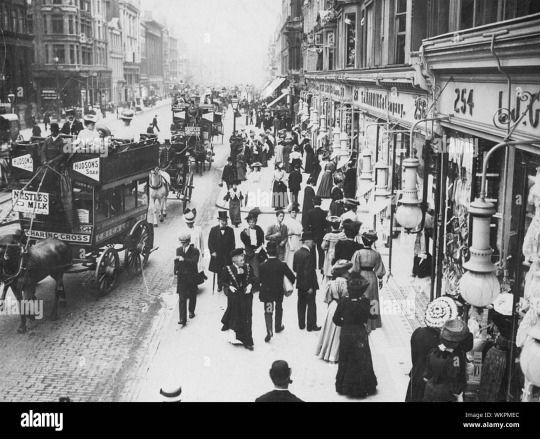
Also London, turn of the 20th century.

A family in Denver, Colorado, c. early 1890s.

Train passengers, Atlanta, Georgia, probably 1890s.
Hope this helps!
#ask#anon#long post#dress history#clothing history#fashion history#one of my friends once said 'most stuff made by historical costumers online isn't out of the question for a maid on her day off'#'or a middle-class wife'#and they're so right#it just ALL looks Fancy to modern eyes
84 notes
·
View notes
Text


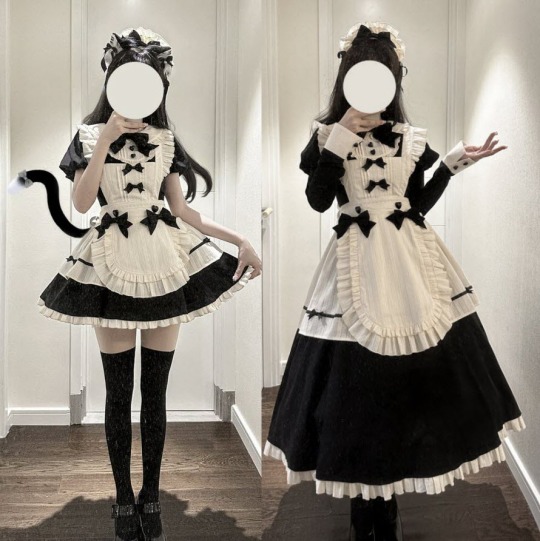


【The 161cm Tall Model】 Wears the 【Size S Long Version Dress Set】 and the 【Size S Short Version Dress Set】
◆ Dress's Set's Shopping Link >>> https://lolitawardrobe.com/black-x-beige-colorway-hawberry-little-princesss-maid-lolita-op-dress-and-apron-set_p8097.html
524 notes
·
View notes
Text
him: u better not be making another vampire maid coord when I get home
me:

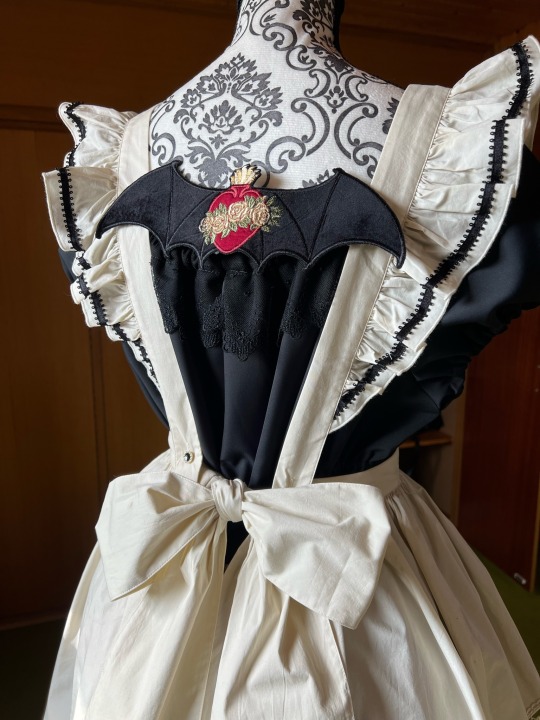
#egl fashion#gothic#gothic lolita#elegant gothic lolita#maid#vampire#vampire goth#romantic goth#victorian gothic#egl coord
456 notes
·
View notes
Text

70 notes
·
View notes
Text
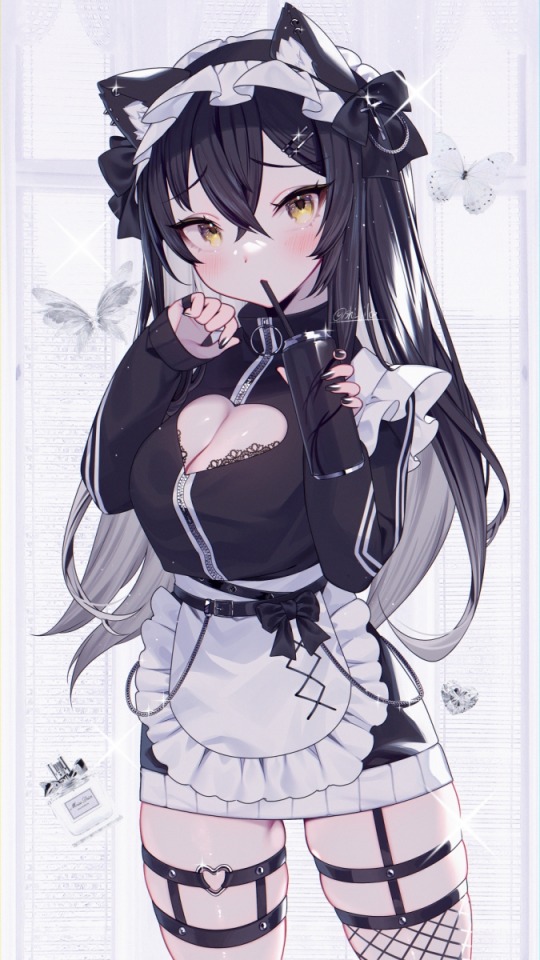
https://twitter.com/shi_jila
💜comms(open!) https://skeb.jp/@shi_jila
#illustration#digital illustration#illustrator#digitalart#artists on tumblr#イラスト#イラスト垢#イラスト作成#jirai kei#地雷系#original character#original art#kawaii aesthetic#kawaii#kawaii illustration#goth#goth girl#harajuku fashion#j fashion#nekomimi#catgirl#maid outfit#art comms open#commissionsopen
188 notes
·
View notes
Text






Hewwwo! Do you need your cute kitty femboy maid to make you a sandwich? Maybe do your laundry? Give you a massage?
Your wish is my command! :3 💝
#femboy#femboys#feminine boy#maid outfit#kitty sub#kitty boy#paw socks#femboy pics#femboy fashion#the maid outfit is so cliché but so cute#maid costume
86 notes
·
View notes